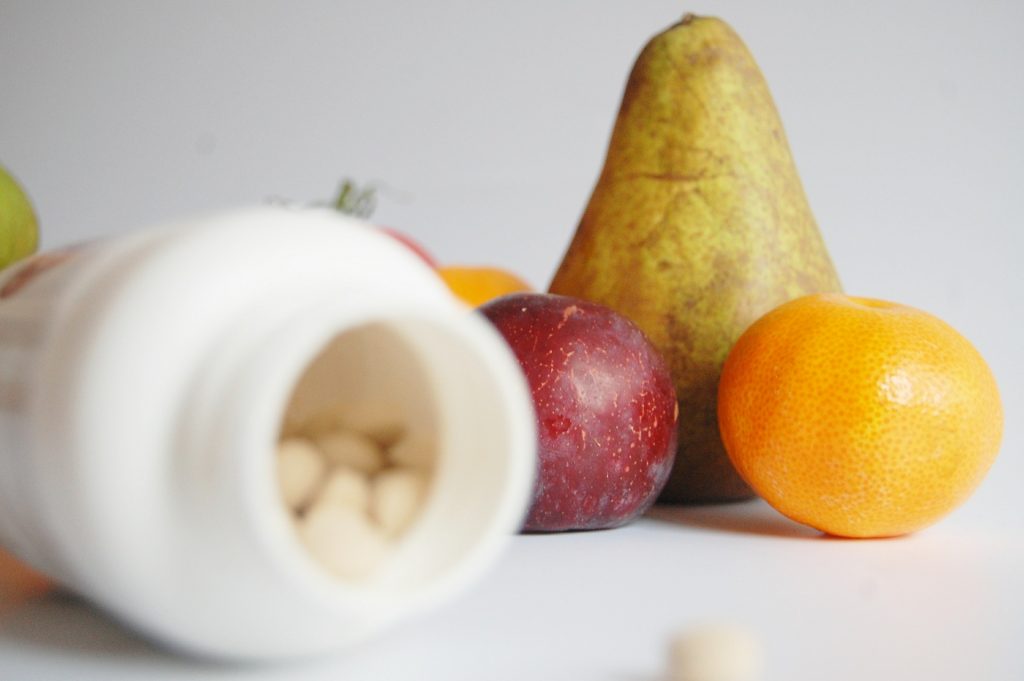Guest Post By Dr. Eric Potter
Third in a series of articles on the immune system.
Although social distancing is an unfortunate norm today due to COVID-19, you can strengthen your body in a way that may allow you to feel more confident about your health.
We can do that by properly preparing our immune defenses with nutrients like vitamins C, D3, and A, as well as zinc.
But wait—don’t just start popping countless capsules, tablets, lozenges, and droppers of these nutrients. Think “Proper preparation.”
Now, repeat: “Proper preparation.”
Before you take a trip to the health food store or enter a pill-swallowing contest with your spouse, you need two vital pieces of information: “how much” and “when.” Without these pieces of information, your preparations will be misguided and incomplete. You may even cause yourself harm.

Start with prevention
The “how much” and the “when” of vitamin dosing are interdependent, so start with prevention, before any symptoms have occurred.
Before you swallow your first supplement capsule, though, you must know where you are starting from. Look at your vitamin tank and figure out both where the levels appear adequate and where they seem on the low side.
If you’re unsure where to start evaluating what vitamins you have in your tank right now, you have a couple of indicator gauges. Take mental notes and remember to check regularly. First, review your daily meals over the past week and ask yourself whether these nutrients pop up on the “ingredients” list. Second, take a lab test for certain nutrients, as these tests can sometimes do a better job of gauging your tank. You may be encouraged, or you may be discouraged. Nevertheless, you’ve taken the first step.
Getting our vitamins mainly from food is always preferable. Supplements should do just that—supplement. Start keeping a food diary. When you evaluate your dietary habits from information in the diary, ask yourself the following questions: Do you see vitamin C sources like citrus fruits there? Do you see vitamin D3 showing up in dairy or other foods? Do you note any nuts and seeds in your past week that might provide some zinc? What about some carrots or liver for your vitamin A? As for glutamine, you might even ask yourself, “What’s that?” You can get some from any protein source since glutamine is an amino acid, but you don’t know if you’re getting enough.
You need criteria for each of these nutrients and a sense of how much of each you get from each of the foods on the past week of your food diary. Most will initially look to the RDA or “Recommended Daily Allowance” for guidance, but we need to understand what this means. Various nutrition experts, through several studies and experiments, came to a consensus on how much an average person needs of each nutrient to maintain adequate life functions. However, are any of us perfectly “average”? Each person is genetically and therefore metabolically distinct from the rest of us in many respects. Some need more of a certain vitamin, and some need less based on their genetics. Beyond genetics, particular toxins or infections might cause you to need more of a particular nutrient. On the other hand, the RDA by definition stands as the lower limit which seems to prevent deficiency symptoms in the average person. This does not mean optimal. Instead, it means “just enough.” We do not have to settle for “just enough.”
Ultimately, a target somewhere above the RDA’s prescription looks to be a better choice for these nutrients. However, for some of them, the task of estimating when “enough is enough” challenges almost everyone.
Don’t take too much
Before going further, yes, you can get too much of a good thing.
Indiscriminately popping a bunch of vitamins may cause more harm than good and you need a means of avoiding the overdoses as well as the underdoses. Recognizing symptoms of excess—like zinc causing a metallic taste—helps, but sometimes the symptoms of excess come too late. If you intend to push the dose to the upper limits of optimal, you will want to consider a blood test measurement for vitamin D and zinc.
You can ask your doctor or use the guidelines here to determine if your level is optimal for zinc and vitamin D. Rarely would you need to test for vitamin A unless taking over 10,000 units daily or have a problem absorbing nutrients in the intestine. Vitamin C will tell you if you overdosing through loose stools or diarrhea.
For vitamin D, you want to at least measure the level of 25-hydroxyvitamin D in your blood serum. While you can buy D2 forms, the 25-hydroxyvitamin D3 gets the most attention from the medical community as it is the form most reflective of the body’s vitamin D stores.
The mainstream of medicine agrees that having a level above 30 ng/ml (the common consensus and the reference range on most lab reports) ensures an adequate supply in most people. Those of us in functional or integrative medicine believe studies show that the optimal range is likely closer to 60-80 ng/ml (nanograms per milliliter). Having 30 ng/ml of vitamin D3 helps avoid bone disease or calcium deficiency in the blood but seems to fall short of fulfilling all the functions of vitamin D.
For zinc, ask your doctor to also check copper. These two need to be balanced for the body outside the immune system to function properly. From there, you want your zinc to be in the upper half of the reference range. A few studies have indicated that the higher levels may provide slightly better protection against viral respiratory infections.
When do you boost?
Now that you have a list of immune supplies and a sense of how much of each you are getting relative to what you need, the question of “when” you need them arises.
First, don’t wait until you get sick to take these nutrients. Yes, they still help after the infection, but having enough of them already on board works much better. Second, most of these supplements work much better when taken regularly, with a few exceptions. Third, many can have their dosage cranked up during the actual infection to help fight it off.
It’s much easier to find motivation for regular therapy when actual discomfort such as fever, pain, or a cough pokes you repeatedly. When you feel good, remembering these preventive therapies and making a habit out of good nutrition comes less naturally. You must develop habits that maintain sufficient nutrient intake to provide protection. Set up a routine now for zinc, vitamin D, vitamin C, and vitamin A even if all you do is add a few new foods to your life.
You do have a little wiggle room with the fat-soluble vitamins; they stick around longer than the rest, so you can take them only once or twice a week without a problem. Due to their fatty nature, they stay in circulation or storage, even if you don’t eat a carrot or swallow a capsule of vitamin D for a few days.
Hopefully, regular preventive use at proper doses will do exactly what it says on the label: prevent infections and their symptoms. Since nothing is perfect in this fallen world, when infections do gain a foothold a little extra boost is often helpful or necessary.
For adults, the typical 500 mg to 1,000 mg per day of vitamin C can be boosted to a few thousand milligrams (the maximum dose depends on who you read) per day during the illness. The immune system uses this vitamin more rapidly during illness.
The baseline 1,000-5,000 daily units (IU) of vitamin D can be super-dosed for one day to 50,000 or even 100,000 units in order to stimulate immune defenses (talk to your doctor before trying this and then later hold back your regular dose for one to two weeks to avoid excessively high levels).
On a side note, while much debate continues over COVID-19 therapy, it is believed that adequate vitamin D prior to viral exposure greatly influences whether one gets COVID-19 and, if they do, how severe the infection becomes for that person. Even mainstream medicine recognizes this fact and has begun to use vitamin D as a therapy, not just as a preventive.
Zinc can be raised from a regular 10-25 mg daily up to 60 or 70 mg daily for five to seven days. Going longer can lead to copper deficiency, nausea, and an unwelcome ongoing metallic taste.
Some will also advocate a large vitamin A boost in viral illnesses, but this necessity is less clear, and the toxicity line is a little easier to cross.
Going forward
While you are not yet ready to be a doctor or nutritionist yourself based solely on this article, you at least have more understanding, which should prompt you to ask your health care provider for further guidance. You do not need a medical opinion to move forward with improving your dietary choices but should consider asking a trustworthy provider if you can get blood tests done or for recommendation particular to your health status before adding too much in terms of supplements.
Live a healthier, more abundant life by keeping a discerning eye on your immune health.
___________________
Dr. Eric Potter, Internal Medicine and Pediatrics, founder of Sanctuary Functional Medicine DBA and a Samaritan Ministries member. Learn more about Samaritan Ministries at samaritanministries.org/crosspolitic.
We are starting a Fight Laugh Feast quarterly print magazine! Click HERE to subscribe.
The information provided in this article is for educational purposes and is not meant as medical advice. It is the opinion of Dr. Eric Potter. The information is not meant to replace a one-on-one relationship with a qualified health care professional. Consult your health care professional before using any products based on this content.
Citations for this article are available at SamaritanMinistries.org/immunity-citations. Original Post: https://samaritanministries.org/blog/be-an-immune-system-prepper
Image by Mizianitka from Pixabay
